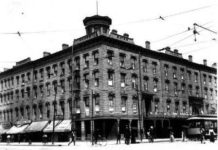
In the early 19th century, Australian states served as penal colonies for British criminals. In New South Wales alone, there were around 165,000 convicts. There were also plenty of former convicts who’d finished their sentences but chose to stay put.
One such man was Thomas Turner, regarded as the finest stonemason in Sydney. When it came time to build a stone vault for the city’s new bank, Turner was the man to call. However, bank officials didn’t know that Turner also built a sewage drain passing right underneath the vault and exiting at Sydney Cove. Turner saw a golden opportunity, so he started planning what would become the biggest bank robbery in Australia’s history.
In 1828, Turner enlisted two Irishmen, James Dingle and George Farrell, to carry out his plan. They also recruited a blacksmith named William Blackstone. The three of them spent their Saturdays digging to reach the vault. While Dingle was a free man, Farrell and Blackstone were working convicts, and Saturday was their only day off. Eventually, Dingle recruited two more men to speed up the process.
Turner’s plan worked. The robbers dug their way into the vault and left with £14,000. However, they had to do it on a Sunday, when the bank was closed. This meant bribing the muster clerk to let Blackstone and Farrell have the day off. Eventually, the clerk made the connection, and the men were brought in for questioning.
The men were dismissed and might have gotten away for good if it weren’t for greed. Dingle and another man involved, Thomas Woodward, conned Blackstone out of his share. In 1831, Blackstone was arrested on an unrelated charge. In exchange for a pardon, a reward, and a chance at revenge, he gave up the other robbers. The money was never recovered.













